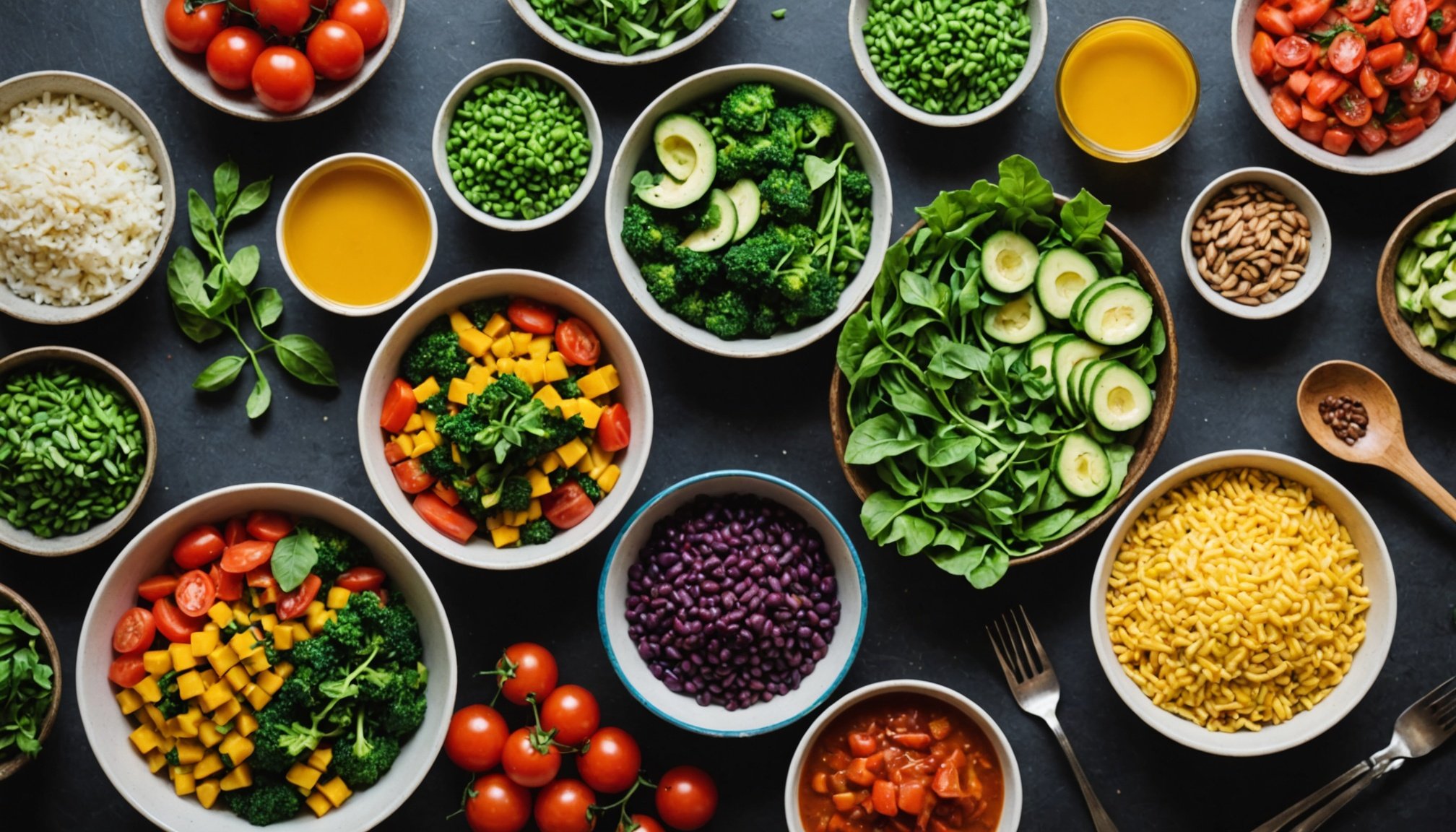Understanding Iron Deficiency in Women
Iron deficiency can significantly impact women’s health, often manifesting in symptoms such as fatigue, weakness, and pallor. Women are particularly susceptible to this condition due to factors like menstruation, which increases iron loss. Pregnant women and those adhering to a vegetarian diet may also experience additional challenges in maintaining adequate iron levels.
A vegetarian diet, while beneficial in many ways, requires careful meal planning to ensure enough iron intake. Non-meat sources of iron, known as non-heme iron, are not as easily absorbed by the body compared to heme iron found in animal products. This necessitates a strategic approach to combine iron-rich foods with vitamin C-rich foods, which enhance absorption.
Additional reading : Revitalize Your Bedroom: Expert Advice for Better Sleep and Radiant Skin
Addressing iron deficiency through nutrition is vital. Incorporating iron-rich foods like legumes, nuts, seeds, and fortified cereals can help combat deficiency. It is also beneficial to explore diverse food groups and include a variety of leafy greens to maintain a well-rounded diet. Understanding these dietary needs equips women with the knowledge to address iron deficiency effectively. An informed choice in nutrition can lead to improved energy levels and overall health. Regular check-ups and blood tests can further assist in monitoring iron levels and making necessary dietary adjustments.
Top Iron-Rich Vegetarian Foods
Iron intake from plant-based sources can effectively support women’s health. Legumes, such as lentils, chickpeas, and beans, are excellent sources of iron. Nuts and seeds, particularly pumpkin seeds and almonds, offer substantial iron content. Whole grains, including quinoa and brown rice, not only provide nutrients but also add variety to meals.
Also to read : Energizing Green Smoothie Mastery: Your Ultimate Nourishment Guide for Busy Mornings
Leafy greens like spinach and kale are vital for iron intake, albeit with lower absorption rates than animal-based sources. It’s crucial to consume these greens with foods high in vitamin C to improve absorption, such as oranges, tomatoes, or bell peppers. This enhances the availability of non-heme iron for better efficacy.
Fortified foods are another practical option. Cereals, breads, and plant-based milk fortified with iron can significantly contribute to daily intake. Exploring diverse food groups ensures a balanced diet while boosting iron consumption.
Including a mix of legumes, nuts, seeds, and greens in daily meal plans helps address iron deficiency comprehensively. Embracing various food sources not only enriches diet diversity but also supports sustained iron levels. This approach is particularly advantageous for individuals adhering to a vegetarian diet, ensuring health and nutrition are optimally maintained.
Overcoming Common Concerns About Vegetarian Diets and Iron
Transitioning to a vegetarian diet can raise concerns about maintaining adequate iron levels. It’s often believed that plant-based diets are inherently insufficient in this nutrient. Addressing this misconception is vital to women’s health. Effective vegetarian nutrition focuses on incorporating diverse iron-rich foods such as lentils, seeds, and whole grains that are fortified with iron.
For those worried about iron deficiency, iron supplements may be recommended under a healthcare provider’s guidance. This ensures precision in dosage and addresses specific deficiencies without unnecessary overdose risks. Women’s health can benefit from both diet and supplementation when necessary.
Consider including vitamin C-rich foods like citrus fruits or bell peppers in meals. These enhance the absorption of non-heme iron from vegetarian sources, making them more effective in meeting daily iron needs. Proper meal planning eliminates dietary concerns and ensures varied and nutritionally rich meals.
Addressing long-held vegetarian myths fosters confidence in choosing plant-based diets. Well-planned vegetarian meals offer long-term health benefits such as improved cholesterol levels, heart health, and even energy. By breaking down these myths, individuals can enjoy the health advantages of vegetarian lifestyles.
H2 – Key Nutritional Strategies for Iron Intake
In the quest for optimal vegetarian nutrition, understanding how to integrate iron effectively into one’s diet is imperative.
H3 – Incorporating Iron-Rich Foods
To fortify your diet with iron, consider adding plant-based powerhouses to your meals. Opt for iron-rich foods such as lentils, chickpeas, and nuts. Quinoa and fortified cereals also serve as excellent sources. These not only supplement iron but enrich your meals with protein and other vital nutrients.
H3 – Importance of Combining Foods for Optimal Absorption
Combining iron-rich foods with vitamin C-rich options markedly enhances non-heme iron absorption. Consuming foods like oranges, strawberries, or bell peppers alongside your main dishes can help your body utilise iron more efficiently. This strategic pairing maximizes benefits without altering dietary constraints.
H3 – Recommended Cooking Methods to Preserve Iron
Cooking techniques significantly impact iron retention in vegetarian meals. To preserve iron content, consider these methods:
- Steaming: Retains more nutrients compared to boiling.
- Sautéing: Quickly cooks vegetables, maintaining their mineral integrity.
- Avoid over-boiling to prevent nutrient loss. Employ these practices to ensure you harness maximum nutritional value, bolstering your iron levels effectively through thoughtful meal planning.
Sample Vegetarian Meal Plans for Iron Deficiency
Meal plans play a pivotal role in maintaining adequate iron levels for those with iron deficiency following a vegetarian diet. Crafting a one-day meal plan featuring iron-rich meals ensures sufficient intake throughout the day.
One-Day Meal Plan Idea
Start your day with a breakfast of fortified cereal topped with fresh berries and a splash of plant-based milk. This combination offers a substantial boost to iron levels and is complemented by the vitamin C in berries, enhancing absorption. For lunch, consider a chickpea and spinach salad drizzled with lemon dressing, which not only provides ample iron but adds a savoury touch. Include a mid-afternoon snack of mixed nuts and dried fruits; both rich in iron.
Recommendations for a Weekly Meal Plan
Variety is key to sustaining interest and nutrition in a weekly meal plan. Rotate meals like lentil soup, quinoa stir-fry with bell peppers, and roasted pumpkin seeds. Integrate at least two different vegetarian recipes each day to maintain a balanced approach.
Recipes Featuring Iron-Rich Ingredients
Try a robust lentil stew or a vibrant vegetable curry; each dish offers versatility and richness in flavour. Featuring iron-rich legumes and enriched cereals guarantees nutritional needs are met without compromising on taste.











